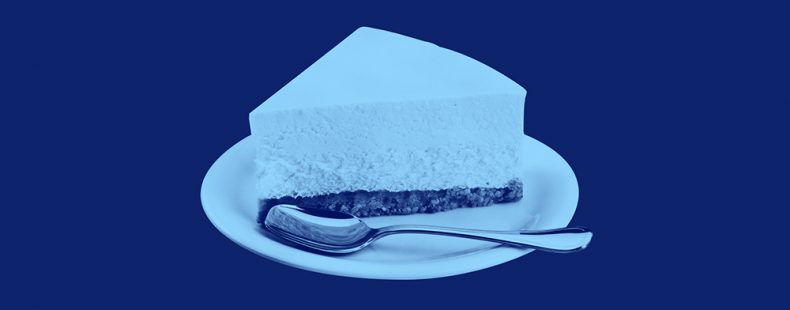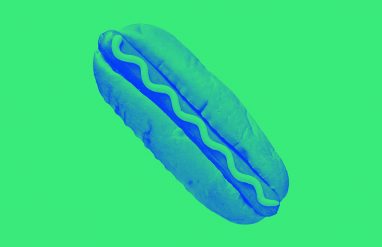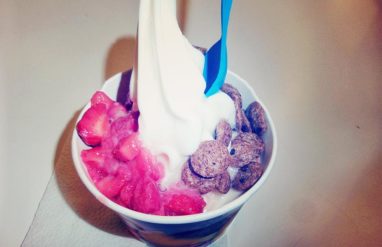A cake can turn any common gathering into a celebration. Simply offering cake can turn an event into a party, and the word itself evokes happy memories of birthdays, weddings, and other festivities (though the phrase let them eat cake has quite a different connotation).
Yet what you should expect to see when someone says there will be cake is somewhat up in the air … even if a dessert has the word “cake” in its name. There are, after all, many different types of cakes—some of which stretch the literal definition of what a cake can be. Let the cake debate begin!
What is a cake?
A cake is “a sweet, baked, breadlike food, made with or without shortening, and usually containing flour, sugar, baking powder or soda, eggs, and liquid flavoring.” It can be as thin and flat as a plate or as fluffy as a cloud. The word cake originated around 1200—50. It stems from the Old Norse kaka and is related to the German word for cake: kuchen.
The sweetened breads we all know and love as cake (you know, the stuff beneath the frosting) can take on many flavors. Vanilla, fruit, and chocolate are all commonly added to the mix depending on one’s preferences. So long as it checks the basic ingredients and is a sweetened bread, cakes can be endlessly customizable.
In short, there are plenty of desserts that fall into the broad cake category. There are also some desserts that take the name of cake somewhat controversially.
Is cheesecake a cake?
It’s easy to love cheesecake. It has all the right ingredients: cheese, sugar, butter, vanilla, and a graham cracker crust. But is it actually a cake as the name suggests?
Cheesecake is just one of the desserts that falls into the category of having “cake” in the name despite possibly not being a cake at all from a pure definition standpoint.
Cheesecake is typically made with a cheese like ricotta, cream cheese, or Neufchatel (a creamy French cheese). Other ingredients include sugar, egg, and graham cracker. An early version of a cheesecake with baked cheese, flour, and often honey has been made since the era of ancient Greece. The ancient Romans had a similar recipe as well, and they called it placenta or libum.
Whether today’s cheesecake lives up to the latter half of its name, however, is much debated. A cheesecake is similar to a flan, but with a crust. It’s also similar to a pie in that it has custard filling and a crust along the sides and bottom.
What cheesecake lacks are some of the basic ingredients that make a cake, well, a cake. There’s no flour in the main custard-like mix, for example, and no baking powder or soda. Cheesecake may be decadent and rich, but it’s far from “breadlike”—another part of what defines a cake.
Is fruitcake a cake?
Fruitcake is, by definition, “a rich cake containing dried or candied fruit, nuts, etc.” It’s typically served around the winter holidays, and it’s made with butter, sugar, baking powder, flour, rum, and any number of nuts and dried fruits.
Essentially, a fruitcake is simply a loaded cake. The name we know today originated in 1840–50, though variations with pomegranate, raisins, pine nuts, and barley have been around since ancient Roman times.
Fruitcake sometimes gets a bad rap for being intensely dense or dry, but it is a cake nonetheless, and it belongs in the same family as that fluffy cake with the swirl of frosting on top served at birthday parties.
Is angel food cake a cake?
This style of cake gets its name from how light and fluffy it is. Angel food cake is a type of sponge cake (a light and porous cake) made with flour, sugar, egg whites, cream of tartar, and both almond and vanilla extract—not because of any celestial beings as the name suggests. The texture comes from lots and lots of beating the egg whites to create an airy texture.
Though the texture is different than some of the other cakes out there (you don’t have to put in all the work to whip egg whites into fluff for many other styles of cake, thankfully) angel food cake is very much a cake. It is flour- and sugar-based, breadlike, and it’s baked.
WATCH: Hot dogs, Coleslaw, And Other Debates About Food
What about a cookie cake?
When it comes to popular desserts, cookies are fan favorites right up there with cakes. And then there are cookie cakes, which are essentially just large, cake-sized cookies.
The word cookie was first recorded around 1750–55 and comes from the Dutch word koekie. It has had a relation to cake from the start: koekie is a variant of koek, which means biscuit or cake. Today, a cookie is defined as “a small, usually round and flat cake, the size of an individual portion, made from stiff, sweetened dough, and baked.”
A cookie cake, therefore, indeed falls into the category of cakes despite just being a large version of a different type of dessert.
And what’s an ice cream cake, anyway?
Like cookie cakes, ice cream cakes are a popular dessert in the form of a cake. Unlike cookie cakes, however, ice cream cakes often lack what makes a cake, well, a cake.
Ice cream cake is primarily made with ice cream—meaning frozen cream or milk along with butterfat, sugar, and flavoring. That means it lacks the flour and the baking aspects that define what a cake is.
Things get a little more complicated with more intricate ice cream cakes that have layers of sponge cake in between the ice cream layers. Still, at its most basic, ice cream cake does not live up to the “cake” part of its name since it’s not baked. No one wants a baked puddle of ice cream, after all.
Names are one thing, but taste is something else entirely. Regardless of whether any of these types of cakes (and cake-like desserts) truly live up to the title of “cake,” they’re all tasty.
Tempt your linguistic tastebuds with another debate: which is tastier, macaroons or macarons?












